Transforming Healthcare: Exploring the Evolution and Impact of Telemedicine

Transforming Healthcare: Exploring the Evolution and Impact of Telemedicine
What is Telemedicine?
The word ‘Telemedicine’ literally translates to ‘Healing at a Distance’. Telemedicine means delivery of healthcare services, where distance is a critical factor, by all healthcare professionals using information and communication technologies for the exchange of valid information for diagnosis, treatment and prevention of disease and injuries.
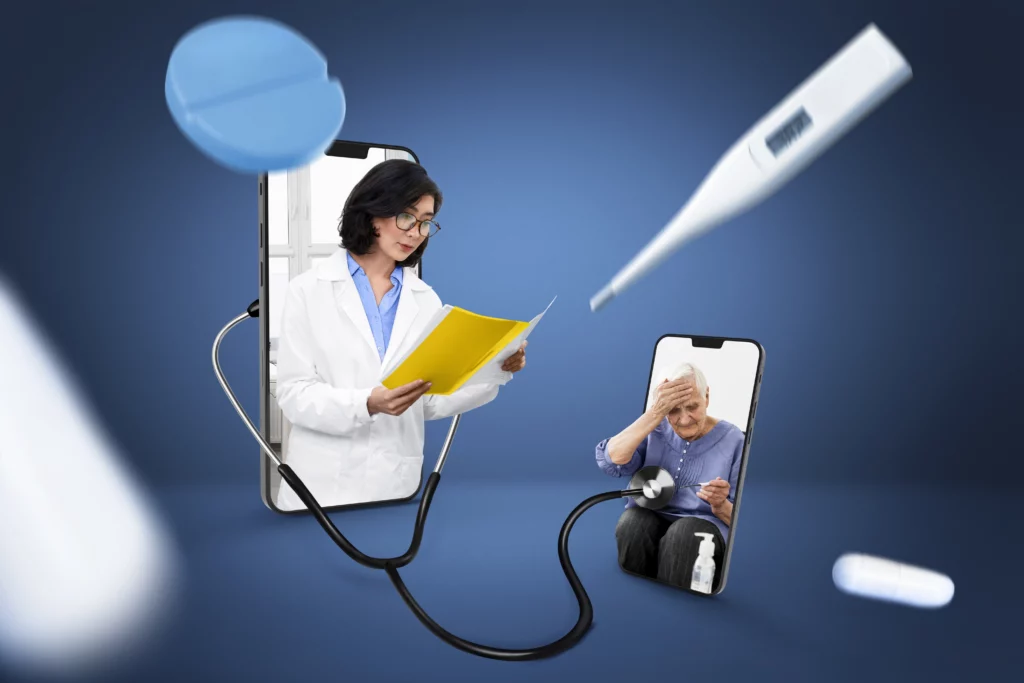
It is the provision of remote clinical services, via real-time two-way communication between the patient and the healthcare provider, using electronic audio and visual means.
Telemedicine is used as the umbrella term to encompass health care delivery in addition to other activities such as education, research, health surveillance, and public health promotion.
The concept of Telemedicine is evolved and executed with the new revolution in the field of technology.
Here are some interesting facts related to Telemedicine: –
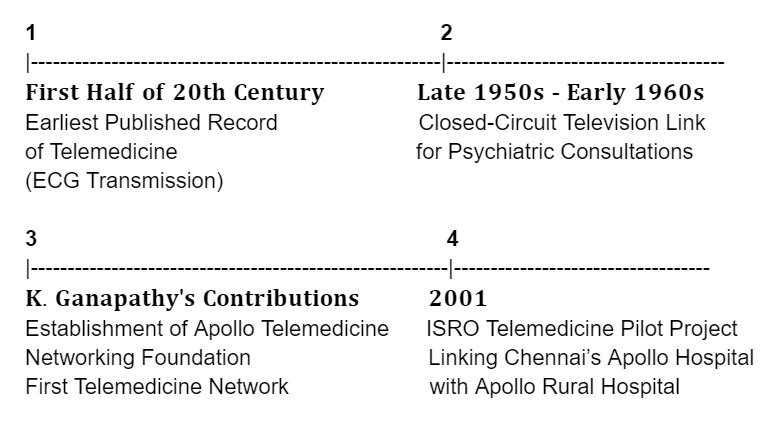
- Earliest published record of telemedicine is in the first half of the 20th century when ECG was transmitted over telephone lines.
- Probably one of the earliest and most famous uses of hospital-based telemedicine was in the late 1950s and early 1960s when a closed-circuit television link was established between the Nebraska Psychiatric Institute and Norfolk State Hospital for psychiatric consultations.
- K. Ganapathy, a neurosurgeon regarded as the father of telemedicine in India, helped set up the Apollo Telemedicine Networking Foundation (ATNF) and Apollo Telehealth Services. 1st telemedicine network between 3 institutions: AIIMS, PGIMER and SGPGIMS.
- ISRO (Indian Space Research Organization) made a modest beginning in telemedicine in India with a Telemedicine Pilot Project in 2001, linking Chennai’s Apollo Hospital with the Apollo Rural Hospital at Aragonda village in the Chittoor district of Andhra Pradesh.
From then to today, telemedicine has come a long way in terms of both healthcare delivery and technology.
Need of Telemedicine: –
Availability of doctors and specialized hospital facilities in remote areas are very less. We are tackling the problems like health awareness, mass screening, early diagnosis and treatment in many areas of our country.
According to the Department of Health and Human Services (HHS), there was a 63-fold increase in the use of medicare visits through telehealth from 2019–2020 as a result of the COVID-19 pandemic. One-third of these are visits to behavioral health specialists.
Telemedicine can solve the health sector related problems and can enhance overall healthcare quality with following benefits
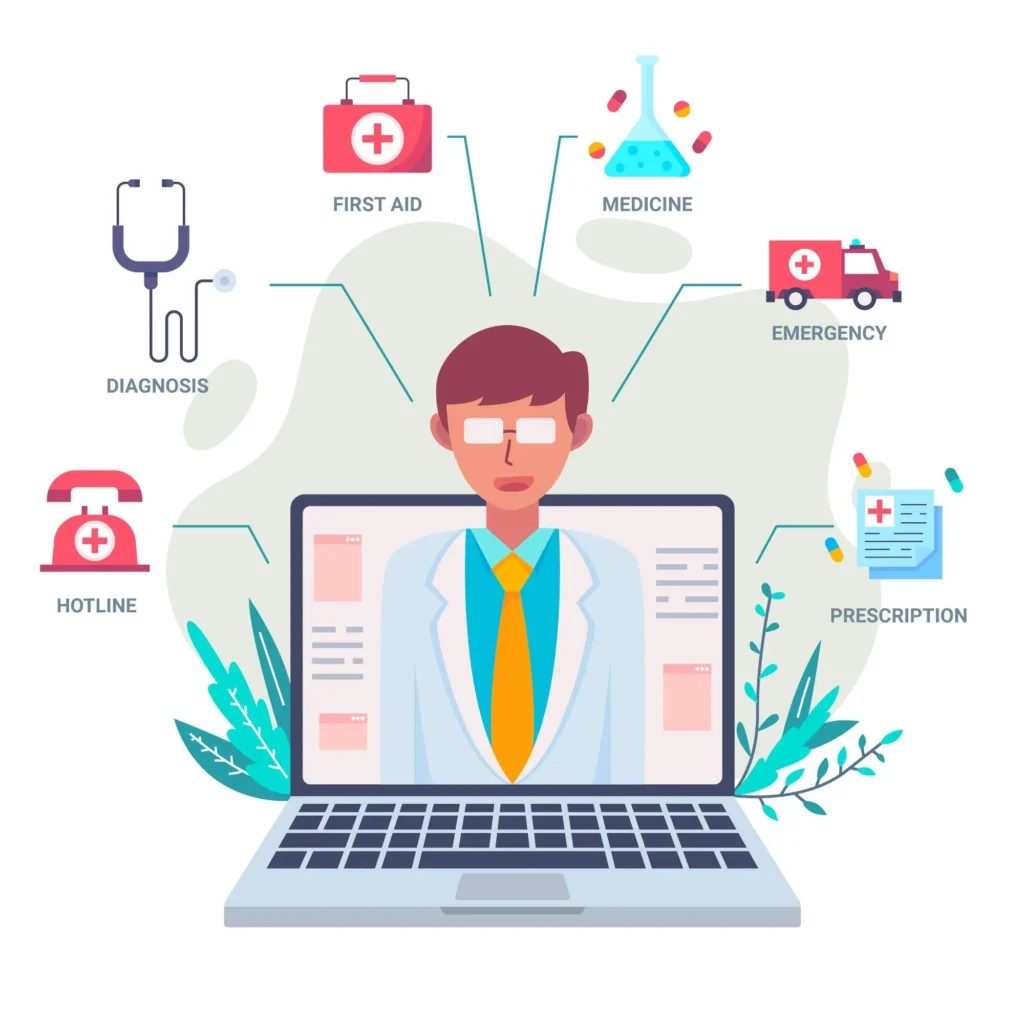
- In primary care, telemedicine is usually in the form of phone calls / video calls, where the patient seeks the doctor’s advice about non-emergency medical problems.
- Telemedicine also helps family physicians by giving them easy access to specialty doctors and helping them in close monitoring of patients.
- The real role of telemedicine at present lies in the convenience it offers to patients and practitioners by obviating the necessity for a physical visit to get medical advice or treatment.
- It is also cost-effective in comparison to the process of waiting to see a doctor or other healthcare provider.
- Telemedicine can also help select urgent calls after working hours. It is of immense value in the follow-up of patients with chronic diseases such as diabetes, high cholesterol, or high blood pressure. In these individuals who are not experiencing any immediate medical problem, but require help with dosage adjustments, lifestyle regimens, prescription refills, or even just access to group support, can benefit from the convenience of telemedicine.
6. Telemedicine requires no significant outlay other than a web camera and a secure patient portal that connects the doctor to a secured electronic medical record database online. This type of system ensures the safety of the private information discussed during a telemedicine call, while also providing the treating clinician with the ability to store necessary medical records. In addition to these required devices, the physician will also require a medical license that has been provided by the same state where the patient will receive their prescription.
There are three main types of telemedicine, which include store-and-forward, remote monitoring, and real-time interactive services.
- Store-and-forward or asynchronous telemedicine – Here the sender stores the information databases and sends it to the receiver at a convenient point of time, and the receiver can review the data according to his convenience.
- Remote Monitoring type of telemedicine -Remote monitoring uses a range of technological devices to monitor health and clinical signs of a patient remotely.
- Real time or synchronous telemedicine – Here the sender and receiver both are online at the same point of time and ‘live’ transfer of information occurs.
Different types of telemedicine services provide various educational, healthcare delivery and management, disease screening and disaster management services all over the globe.
Main components in Telemedicine Includes Teleconsultation, Telementoring and Telemonitoring.
Here are some examples of Telemedicine services used in India: –
National Telemedicine Network (NTN) initiative was approved with the vision to provide telemedicine services to the remote areas by upgrading existing Government Healthcare Facilities in States.
Telemedicine services in the country come under the combined jurisdiction of the Ministry of Health and Family Welfare and the Department of Information Technology.
- The RxBox was developed by UP Manila National Institutes of Health National Telehealth Centre (NTHC) and the Electrical and Electronics Engineering Institute (EEEI) of the UP College of Engineering in 2007 with the support of the DOST PCHRD.
- Fully established telemedicine services in India include mammography services at Sri Ganga Ram Hospital, Delhi.
- Telemedicine also finds its use in places where large populations occasionally/periodically gather at a point of time, where provision of medical care becomes the need of the hour; for example, the Government of Uttar Pradesh practices telemedicine during Maha Kumbhamelas.
- Specialties like Tele-ophthalmology, Tele-psychiatry, Tele-cardiology, and Diabetic screening projects are executed in India.
Beyond this, Doctors can use Telemedicine for many other purposes, including: –
- General healthcare, such as wellness visits
- Non Emergency follow-ups
- Mental health counselling
- Nutrition counselling
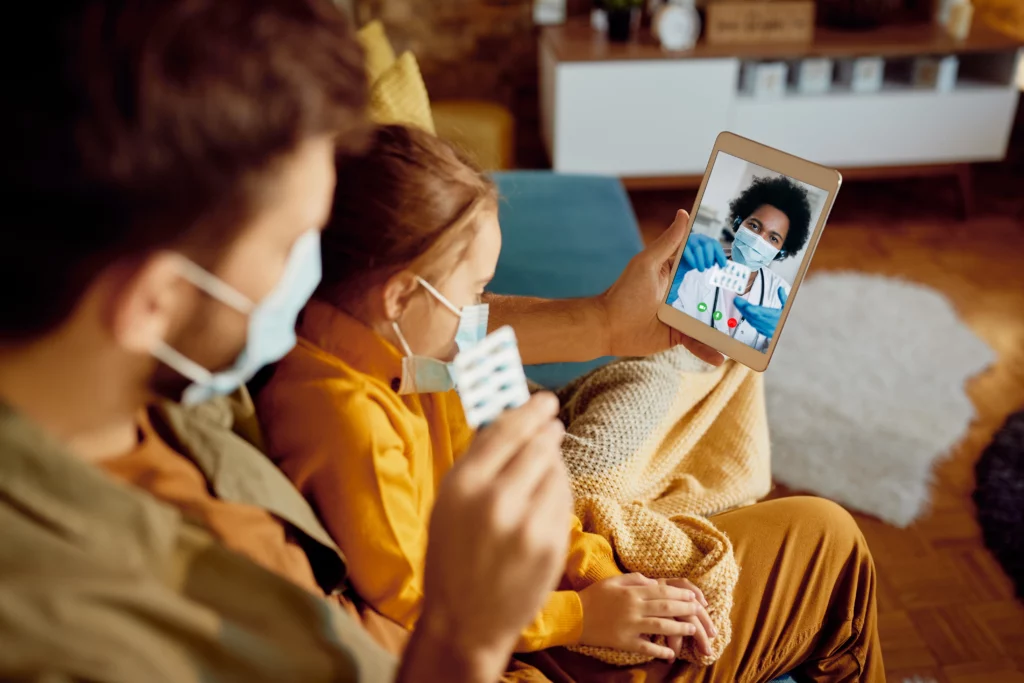
Nadi Tarangini- New horizon in the field of Ayurvedic Telemedicine practices: –
Nadi Tarangini is a patented tech- based Ayurvedic diagnostic tool used for assessing Nadi of individuals.
Nadi pariksha is one of the important and unique assessment criteria according to Ayurveda which reflects underlying imbalances within dosha and its effect on the body. Nadi Tarangini can assess these imbalances along with metabolic health by its unique sensor-based technology.
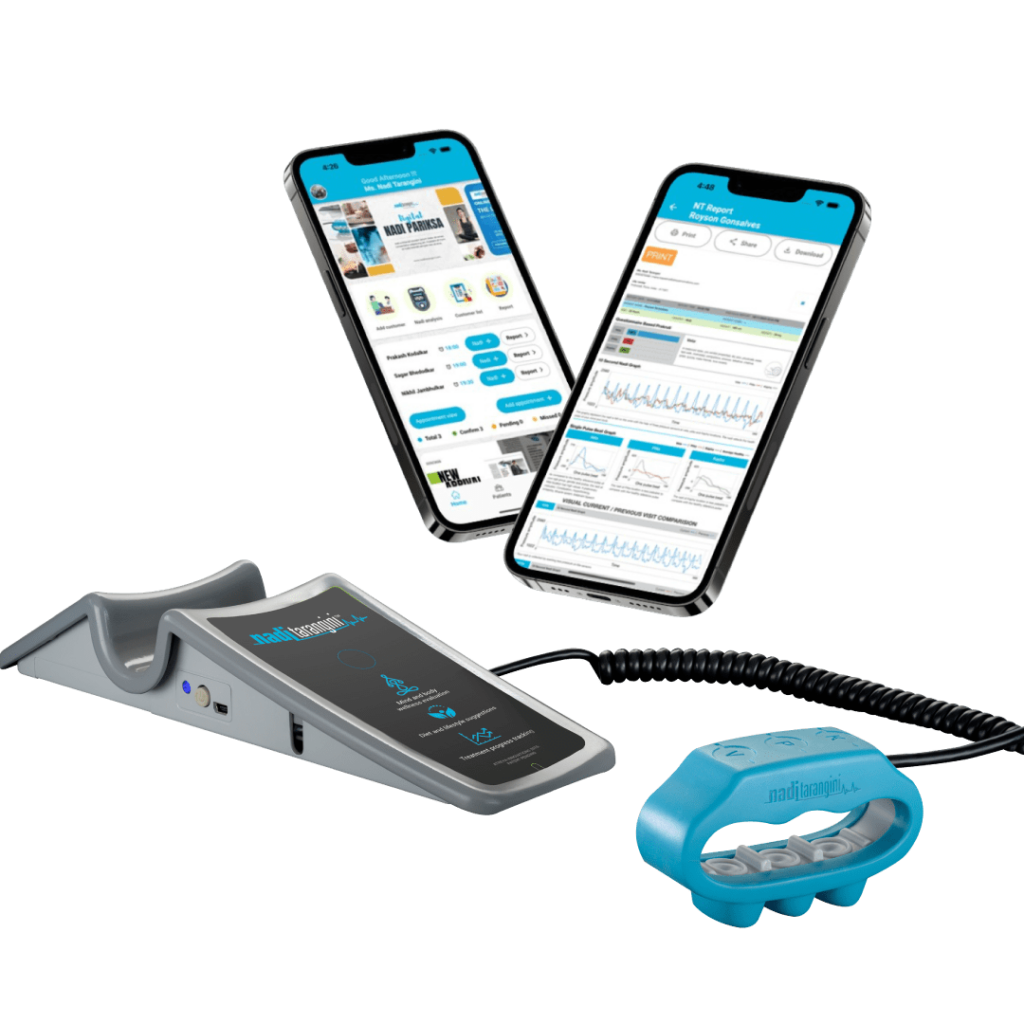
Nadi Tarangini can provide insights like the current Nadi of the patient, metabolic health quotient, emotional wellbeing along with the patient’s lifestyle. By understanding these details, Ayurvedic physicians can make more accurate diagnosis and can prescribe very specific personalized medicines along with lifestyle correction.
Nadi Tarangini can serve as a remote type of telemedicine tool which can be useful in screening and in diagnosis of patients. It also plays a big role in follow ups of patients.
The Ayurvedic physician can send their patients into nearby Nadi Tarangini centres for their Nadi assessment. Patients will be able to get a detailed 8-page report based on Nadi assessment from that centre. Patients can share their reports to existing consultants which may be distant to them for further treatment.
Nadi Tarangini can be used as a Tele-diagnostic tool for screening and diagnosing patients remotely. Nadi Tarangini can monitor health parameters periodically in cases of patients with lifestyle or chronic disorders. Based on reports, Ayurvedic physicians can provide Tele- consultation including medicines and lifestyle corrections.
We could hope for the era of telemedicine in our country. Even though telemedicine cannot be a solution to all the problems, it can surely help decrease the burden of the healthcare system to a large extent.
The recent telemedicine practices reduce travel expenses, saves time, reduces medical costs, provides easier access for the common man to specialist doctors without disrupting their daily responsibilities. It also makes the life of healthcare providers easy by decreasing the load of missed appointments and cancellations, increasing revenue and patient load and improving follow up and health outcomes.

